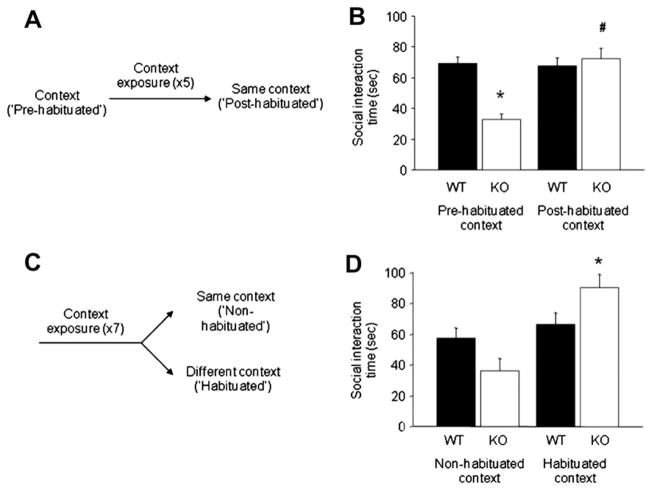Fig. 1.
GluA1 KO mice show reduced social behavior in non-habituated, but not in habituated, tests contexts. (A) Schematic of experimental design. (B) GluA1 KO mice engaged in less social interaction with a novel conspecific mouse than WT controls during the pre-habituation but not the post-habitation test. Social interaction increased from the pre- to post-habituation conditions in GluA1 KO mice but not WT controls (n = 44–46 per genotype). (C) Schematic of experimental design. (D) GluA1 KO mice display a trend to engage in less social interaction than WT controls in a non-habituated context, but engage is significantly more social exploration in a habituated test context. Levels of social interaction increased from the pre- to post-habituation conditions in GluA1 KO mice but not WT controls (n = 9–12 per genotype). Data are Means ± SEM. *p < .05 KO vs. WT, #p < 0.05 KO pre-habituation vs. post-habituation.

